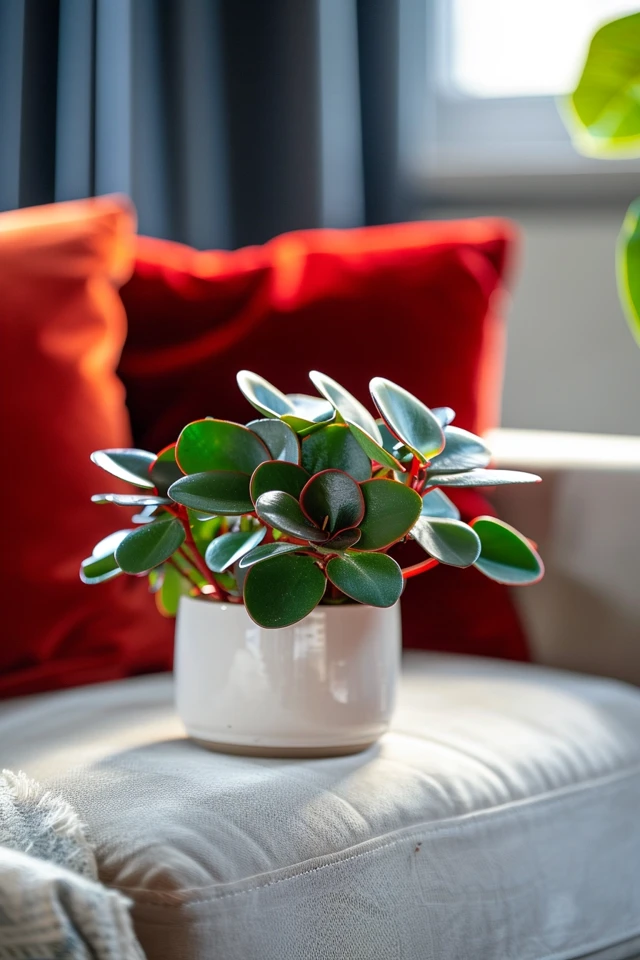Hi there! If you’re a plant lover like me, you’re probably always looking for new ways to expand your green collection. Luckily, propagating peperomia plants is a simple and rewarding process that allows you to create more beautiful foliage for your home or office. In this guide, I’ll walk you through the easy steps to propagate peperomia so you can enjoy a thriving collection of these tropical beauties.
Peperomia plants are known for their lush, vibrant leaves and their ability to thrive in both indoor and outdoor environments. With their unique textures and patterns, peperomia plants can bring a touch of nature to any space. Whether you’re a seasoned plant parent or just starting your journey, propagating peperomia is a great way to grow your collection without breaking the bank.
Propagation can be done through stem or leaf cuttings, making it accessible to both beginners and experienced gardeners. By following a few simple techniques and tips, you can successfully propagate peperomia and watch new plants thrive. So, let’s dive into the world of peperomia propagation and discover the easy ways to expand your green oasis.
Key Takeaways:
- Propagating peperomia allows you to create more plants and expand your collection.
- Peperomia plants can be propagated through stem or leaf cuttings.
- The best time to propagate peperomia is during the spring or summer when the plants are actively growing.
- Use well-draining soil mix and rooting hormone for successful propagation.
- Provide a humid environment and indirect light for optimal growth.

Propagating Peperomia by Stem Cuttings
Propagating peperomia by stem cuttings is the most common and successful method. It allows you to create new plants from healthy parent plants, ensuring that the offspring will have the same desirable characteristics. Follow these step-by-step peperomia propagation techniques to propagate your peperomia plants successfully.
Start by selecting a healthy peperomia plant and choose a stem cutting with a leaf on it. Using clean pruning shears, make a clean cut just below a leaf node.
Place the stem cutting in a small vase or jar filled with water. Ensure that the leaf is not submerged in the water.
Find a location with bright, indirect light for the stem cutting. Avoid placing it in direct sunlight, as this can cause the cutting to wither.
Within the first two weeks, roots should start to grow from the stem cutting. Once new leaves have sprouted, the cutting is ready to be transplanted into soil.
Prepare a small pot with well-draining soil mix. Dip the cut end of the stem cutting in rooting hormone to encourage root growth.
Plant the stem cutting in the pot, ensuring that the soil is firmly pressed around the base of the cutting.
To provide optimal conditions for the stem cutting, cover the pot with a clear plastic bag or use seed starting trays with clear plastic lids. This helps maintain high humidity levels, which are crucial for successful propagation.
Periodically remove the cover to allow fresh oxygen to circulate. This will prevent mold or fungal growth.
The stem cutting should remain in a humid environment until new growth appears. Once the plant has acclimated and shows signs of established growth, you can gradually reduce the humidity and return it to standard household conditions.

Propagating Peperomia by Leaf Cuttings
If you’re looking for easy ways to propagate Peperomia plants, leaf cuttings can be a great option, especially for non-variegated varieties. Here’s a simple Peperomia propagation guide using leaf cuttings:
- Start by selecting a healthy leaf from your Peperomia plant. Make sure to leave a small portion of the stem attached to the leaf.
- Dip the cut end of the leaf in rooting hormone. This will help stimulate root growth and increase the chances of successful propagation.
- Prepare a well-draining soil mix in a small pot. Plant the leaf cutting in the soil, making sure to bury the stem portion of the leaf while leaving part of the leaf above the soil surface.
- To provide a suitable environment for the leaf cuttings, you can use a clear plastic bag or seed starting trays with clear plastic lids. This will help create humidity and maintain a stable moisture level in the soil.
- Keep the soil evenly moist while the leaf cuttings are in the greenhouse. However, make sure to remove the cover periodically to allow fresh air circulation.
- It’s important to note that leaf cuttings may take longer to show new growth compared to stem cuttings. Be patient and wait for the new growth to become visible.
- Once new growth appears, it’s a clear sign that the leaf cutting has successfully rooted and can be acclimated back to regular household humidity.
Remember, creating a humid environment and providing indirect light are essential for the successful propagation of Peperomia by leaf cuttings. With these easy methods, you’ll be able to expand your Peperomia collection and enjoy beautiful, thriving plants.

Conclusion
Propagating peperomia is an enjoyable and fulfilling process that can be achieved through stem or leaf cuttings. Stem cuttings, which can be propagated in water or soil, are the most commonly used and successful method. On the other hand, leaf cuttings are suitable for non-variegated varieties and can also yield new plants.
During the propagation process, it is vital to provide a humid environment and indirect light, which are essential for the growth and development of peperomia cuttings. By following these guidelines, you can increase your chances of success in propagating these beautiful tropical plants.
For those looking to expand their collection of peperomia, there is a wide variety of options to choose from. Some popular peperomia types that can be grown at home include Peperomia obtusifolia, Peperomia clusifolia, and Peperomia rubella. With proper care and techniques like the ones mentioned earlier, you can create a thriving assortment of these stunning plants in your own home.

